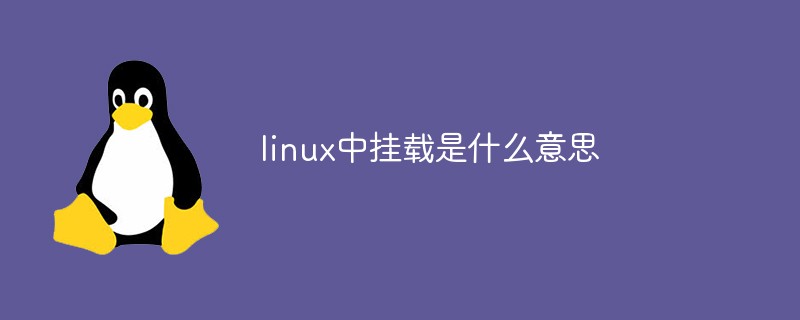
In Linux, mounting is a process in which the file directory of Linux itself and the file directory of the hardware device are combined into one. In the Linux system, the hardware device needs to be mounted before it can be used. If it is not mounted, The command line in the system cannot find the hardware device.

#The operating environment of this tutorial: linux7.3 system, Dell G3 computer.
In the Linux system, "everything is a file", and all files are placed in a tree directory structure with the root directory as the root. From the perspective of Linux, any hardware device is also a file, and each of them has its own file system (file directory structure).
The problem that arises is that when using these hardware devices in a Linux system, the hardware device can only be used by us if the file directory of Linux itself and the file directory of the hardware device are combined into one. The process of combining the two into one is called "mounting".
If it is not mounted, the hardware device can be found through the graphical interface system in the Linux system, but it cannot be found through the command line.
Mounting refers to connecting the top-level directory in the device file to a directory (preferably an empty directory) under the Linux root directory. Accessing this directory is equivalent to accessing the device file.
To correct a misunderstanding, not any directory under the root directory can be used as a mount point. Since the mounting operation will hide the files in the original directory, neither the root directory nor the original directory of the system can be used as a mount point. The mount point will cause system abnormalities or even crashes. It is best to use a newly created empty directory as the mount point.
Related recommendations: "Linux Video Tutorial"
The above is the detailed content of What does mount mean in linux. For more information, please follow other related articles on the PHP Chinese website!